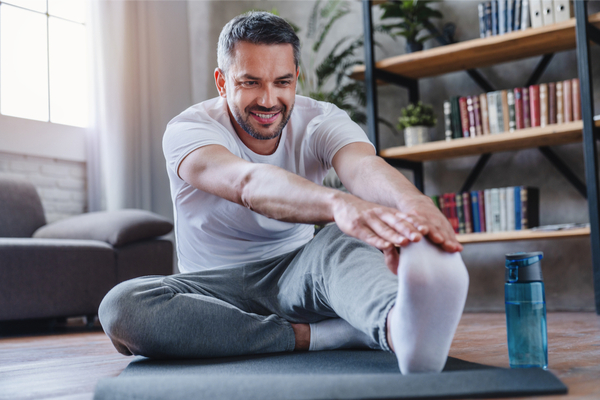
Note: The knee pain exercises and/or stretches in this blog are not intended to replace the advice of your clinician. Starting a new exercise, stretch, movement, or activity may result in some expected stiffness and soreness. If you are unsure, please speak to your clinician before attempting any of the suggestions below.
The knee is a complex joint designed to withstand different amounts and types of forces. Despite the resilience of your knees, placing more force on them than usual or putting them in a cumbersome position for an extended period may lead to tissue irritation. This tissue irritation can be painful, and there is nothing “fun-knee” about a painful knee.
Luckily, there is plenty that you can do to decrease irritation and pain before seeing your pt Health clinician for a thorough assessment.
Activity modification
Often the best treatment you can give the knee is an opportunity for it to rest. Resting your knee does not mean completely immobilizing it. Rather, you should do less, or avoid specific activities that bother your knee until the pain subsides.
Once the pain does subside, gradually reintroduce the activity, doing only as much as you can without pain. For example, if you have recently started running, try to find a distance you can run without any pain during or after your run. Increase this distance little by little over a period of time until you can once again run your desired distance without pain.
The same strategy could be used with any activity such as standing at work, or kneeling to do your gardening. Rest until the pain goes away and then gradually reintroduce the activity, paying attention to how your knee feels, taking breaks as needed.
Therapeutic exercise
Research has shown that therapeutic exercise does not cause or worsen damage and inflammation in your knee. In fact, therapeutic exercise is an effective strategy to reduce knee pain.
However, the amount of exercise you do is important. For most people, a good place to start is approximately 3 sets of 10 repetitions with a 30 second break between each set.
Keep in mind that this is just a suggestion. If you find your knee feeling irritated after or during exercise, you can reduce the number of repetitions or sets you perform.
If you feel as though 3 sets of 10 is too easy, feel free to do more! Here are some exercises that people with knee pain often find beneficial:
Leg extensions
Sitting in a chair, straighten one knee out in front of you while thinking about pulling the inside and outside of your thigh muscles up towards your hip from your knee.
Slowly lower your foot back to the floor and repeat, alternating legs.
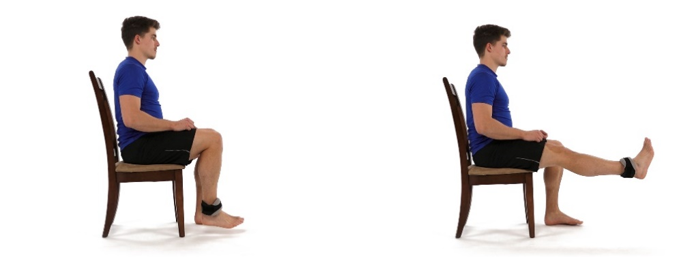
Bridges
Laying face up, place your hands firmly by your side and bend both knees so that your feet sit flat. Push your heels onto the ground to lift your hips up off the surface.
Keep your knees in line with your feet and hips if possible.
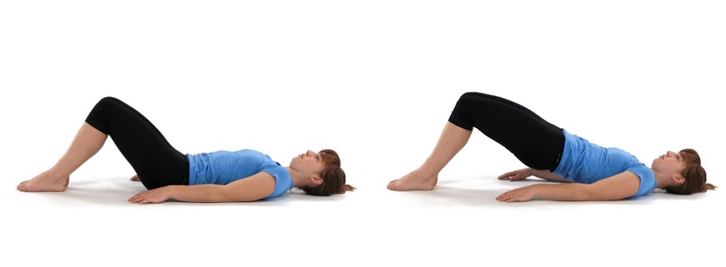
Calf raises
Standing behind a chair or table for balance, raise your heels off the ground. Once you reach your peak height, slowly lower yourself back down.
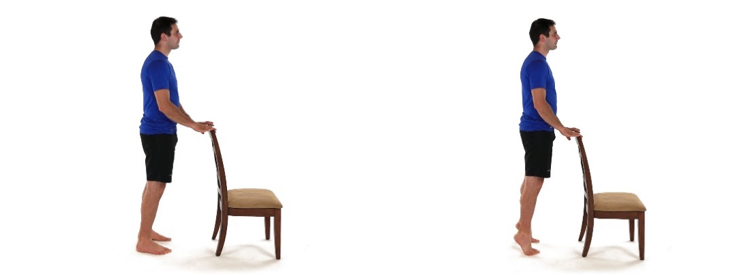
Side lying leg raises

Stretches
Stretching the muscles around your knee may also help reduce pain. Start with 3 sets of 3-4 long easy breaths.
Again, this amount is only a suggestion and you can do more or less depending on how the stretches make your knee feel. Here are some stretches that people with knee pain often find helpful:
Seated hamstring stretch
On the ground straighten one leg and bend the other. Keep your knee straight and reach out with your hand as far as feels safe. You should feel a stretch in the back of your leg. Repeat on the other side.
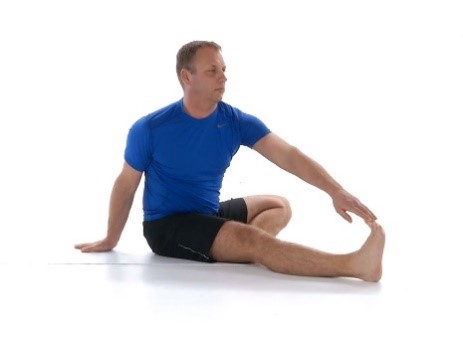
Calf stretch
Place your hands on a wall with your arms outstretched in front of you. Stagger your feet keeping them shoulder width apart. Keep your back heel on the ground and lean forward bending your front knee.
You should feel a stretch in the calf of your rear leg. Repeat on the other side.
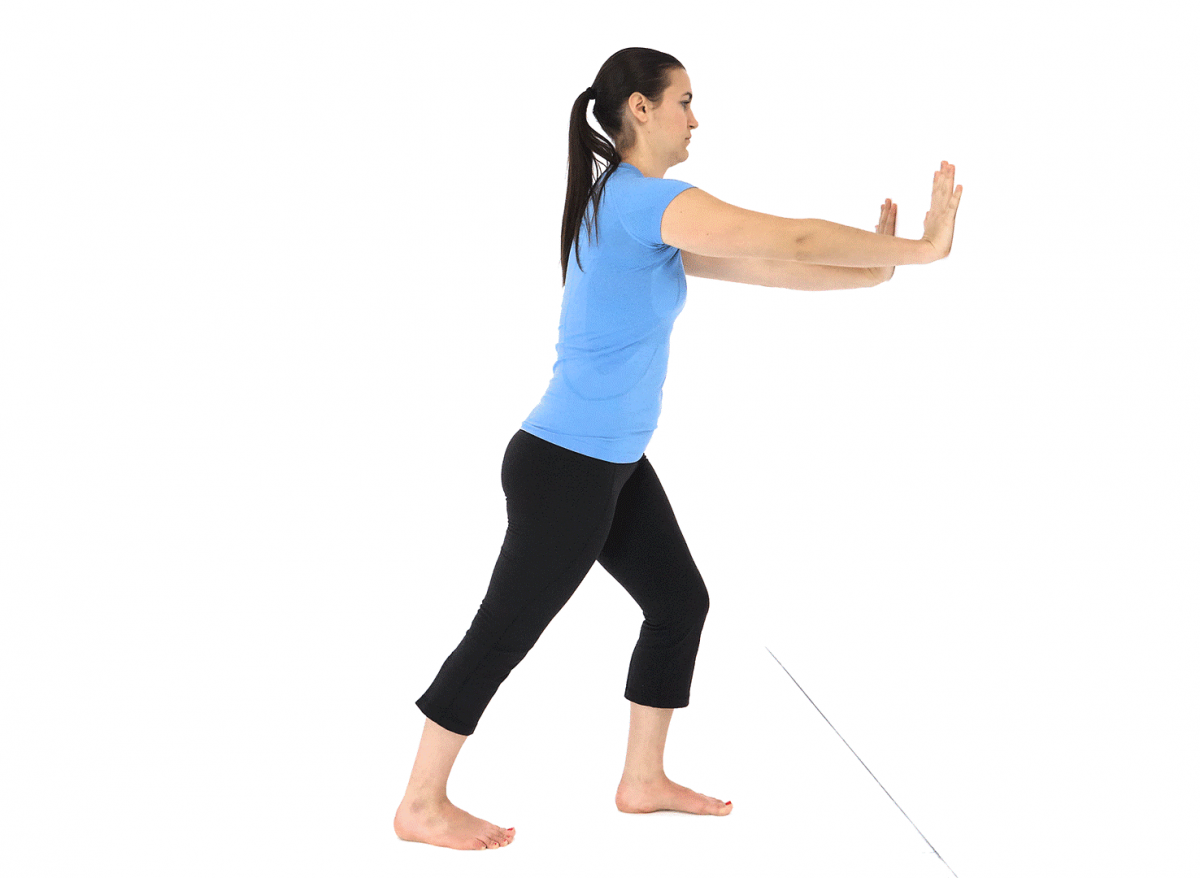
Seated IT band / glute stretch
In sitting, straighten one leg and cross the other over top. Turn your upper body towards the crossed leg and hook your elbow on the other side of your leg.
Use your elbow to gently pull your leg into the stretch. You should feel the stretch in the hip of the crossed leg. Repeat on the other side.

Standing quad stretch
Standing behind a chair or table for balance, bend one leg, bringing your heel toward your buttock and grab it with the hand on the same side.
Use your hand to gently pull your leg into the stretch. You should feel the stretch in the front of the bent leg. Repeat on the other side.
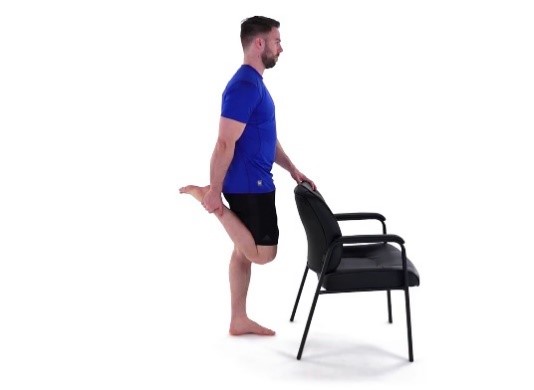
With a combination of rest, activity modification, therapeutic exercise, and stretching, you may be able to alleviate some discomfort in your knee.
If the recommendations above don’t help ease your symptoms, book an appointment online to set up an in-depth assessment and treatment plan with a clinician.
This blog originally appeared on Lifemark.ca and was written by Arthur Szydlowski – a Physiotherapy student at Queen’s University.
